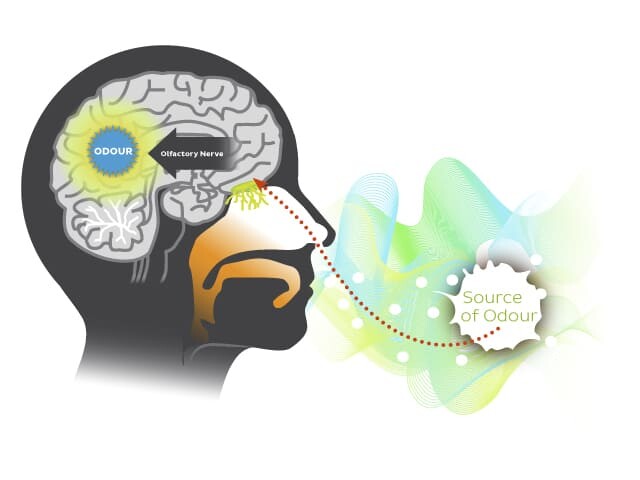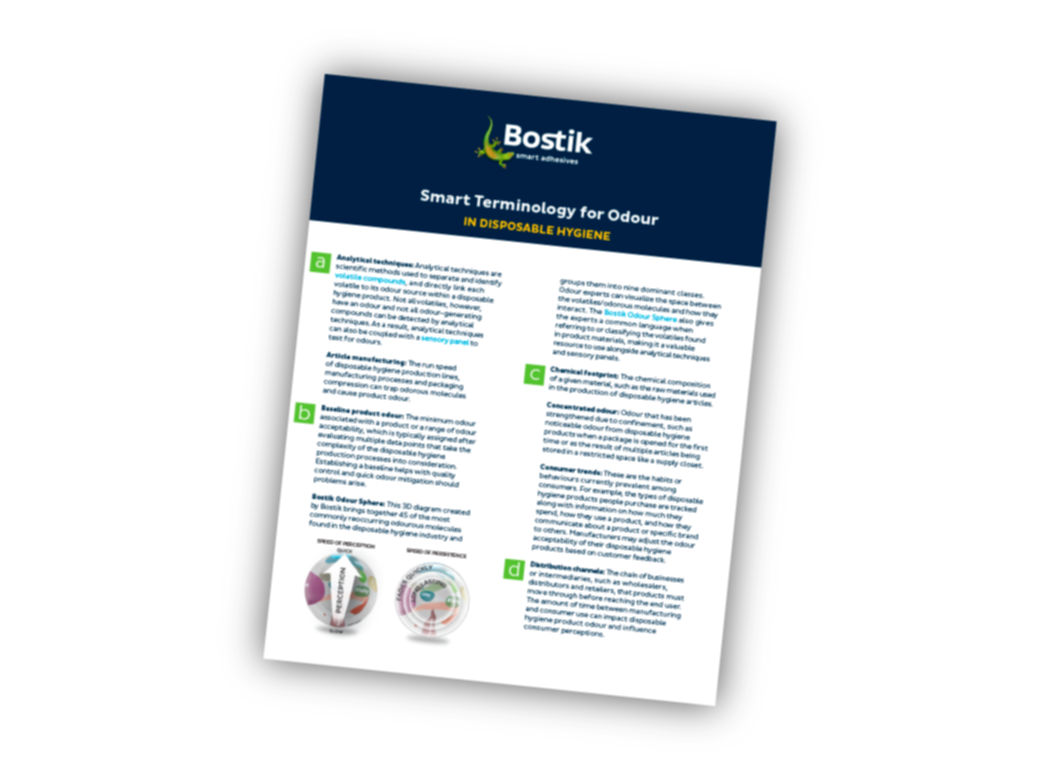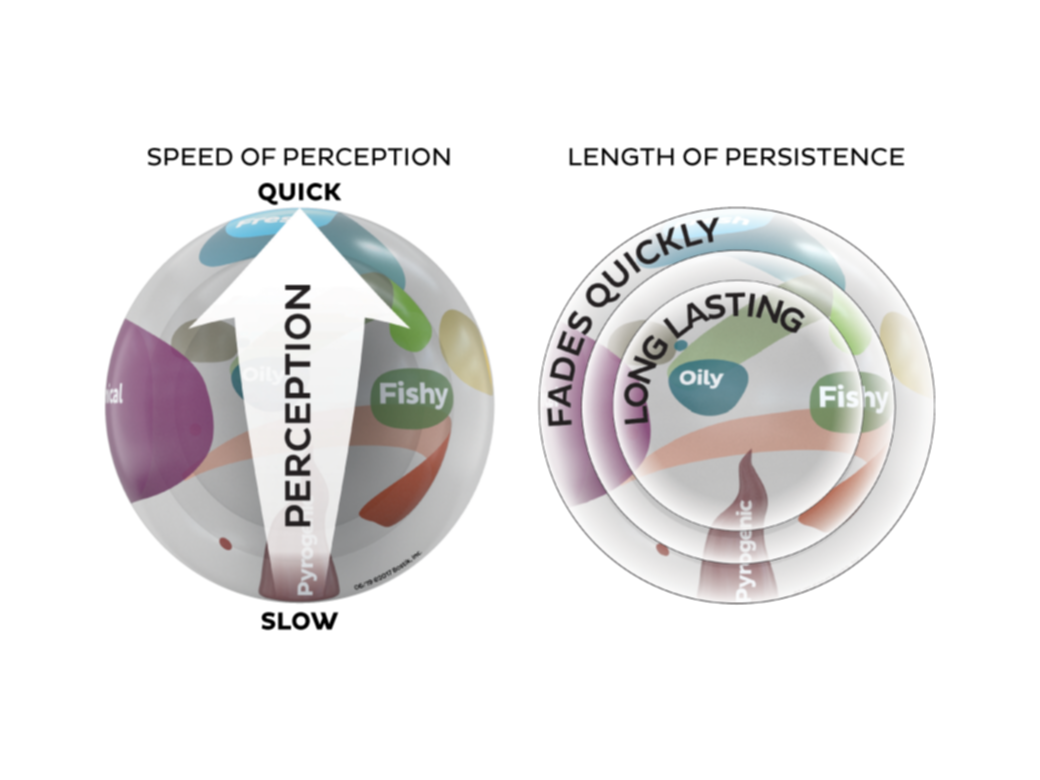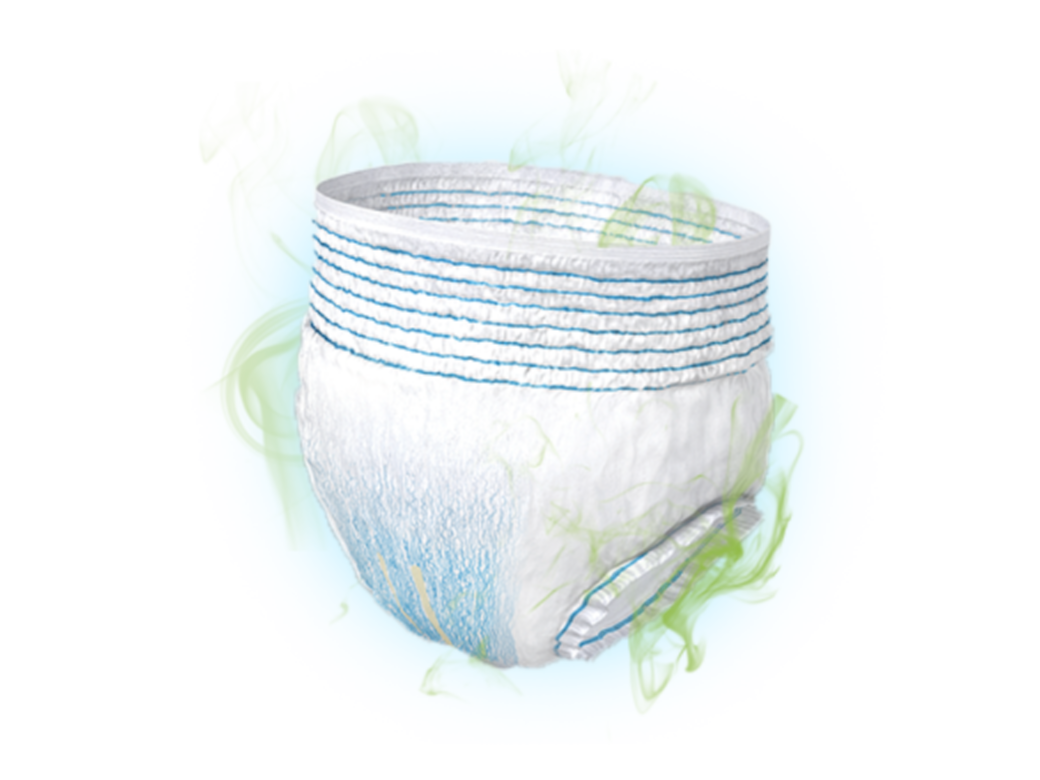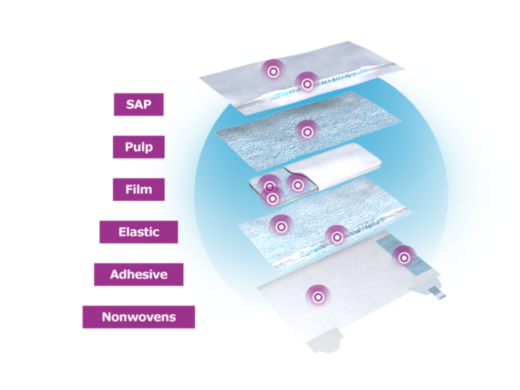Smart Terminology for Odour in Disposable Hygiene
Access a printer-friendly PDF version here.
Analytical techniques: Analytical techniques are scientific methods used to separate and identify odour causing compounds, and directly link each perceived odour to its chemical or material (to stay away from “chemical” theme) source within a disposable hygiene product. Not all compounds, however, have an odour and not all odour-generating compounds can be easily detected by standard analytical techniques. As a result, analytical techniques can also be coupled with a sensory panel to test for odours.
Anosmia: The failure of the development of or the loss of the sense of smell.
Article manufacturing: The process by which disposable hygiene products are produced. This includes variables such as run speed of production lines, processes and packaging. All of these may impact the final product odour.
Baseline product odour: The minimum odour associated with a product or a range of odour acceptability, which is typically assigned after evaluating multiple data points that take the complexity of the disposable hygiene production processes into consideration. Establishing a baseline helps with quality control and quick odour mitigation should problems arise.
Bostik Odour Sphere: This 3D diagram created by Bostik brings together 54 of the most commonly reoccurring odourous molecules found in the disposable hygiene industry and groups them into nine dominant classes. Odour experts can visualize the space between the volatiles/odourous molecules and how they interact. The Bostik Odour Sphere also gives the experts a common language when referring to or classifying the volatiles found in product materials, making it a valuable resource to use alongside analytical techniques and sensory panels.
Cacosmia: Type of parosmia, where one believes a malodour is present when it is not.
Chemical footprint: The chemical composition of a given material, such as the raw materials used in the production of disposable hygiene articles.
Concentrated odour: Odour that has been strengthened due to confinement, such as noticeable odour from disposable hygiene products when a package is opened for the first time or as the result of multiple articles being stored in a restricted space like a supply closet.
Consumer trends: These are the habits or behaviours currently prevalent among consumers. For example, the types of disposable hygiene products people purchase are tracked along with information on how much they spend, how they use a product, and how they communicate about a product or specific brand to others. Manufacturers may adjust the odour acceptability of their disposable hygiene products based on customer feedback.
Distribution channels: The chain of businesses or intermediaries, such as wholesalers, distributors and retailers, that products must move through before reaching the end user. The amount of time between manufacturing and consumer use can impact disposable hygiene product odour and influence consumer perceptions.
Evocative: Specific odours, such as those associated with disposable hygiene products before use or during use, may trigger strong memories or feelings for an individual once the smell is detected.
Gas chromatography: This analytical technique is used to separate, identify and quantify volatile and semi-volatile materials to help detect the odour source within a disposable hygiene product.
Hedonic tone/response: Hedonic tone is the degree of pleasantness or unpleasantness associated with an odour. Odour perception and a person’s hedonic responses to an odour may change from pleasant to unpleasant, or vice versa, depending on both the intensity and evocation of the odour.
Hyperosmia: Hypersensitivity that is usually genetic in origin. It can also be hormonal or caused by fatigue, weakness or hunger.
Hyposmia: Reduced sensitivity that is usually genetic in origin. It can also be hormonal or caused by fatigue, weakness or hunger.
Odour classification: The determination of which group an odour belongs to. The Bostik Odour Sphere is a helpful tool for classifying the odours in disposable hygiene products.
Odour control: Successfully managing the intensity and profile of product odours before and during disposable hygiene article use.
Odour mitigation: The steps disposable hygiene manufacturers take in the attempt to alleviate product odours.
Odour perception: How an individual recognizes and identifies an odour is key to determining its acceptability, especially for disposable hygiene products. Because humans have 300+ genes dedicated to the sense of smell, there is little probability that two people will ever perceive odour the same way.
Odour profile: The given odourous molecules (and their groups) that contribute to the overall odour of the disposable hygiene product.
Odour signal: Odourous molecules travel through nasal mucus and transmit information at the olfactory nerve. If enough volatiles/odourous molecules are received, an odour signal is sent to the brain.
Odour source: The origin of a given odour within a product. Through use of analytical techniques and sensory panels, manufacturers can work toward identifying the source of odours in their disposable hygiene products.
Odour stimulus: The signal from an odourous molecules that activate the olfactory system to send a signal to the brain.
Odourous molecule: Typically small molecules that can easily be present in the vapor or gaseous state, which binds with odour receptors in the olfactory system and stimulate a response.
Olfactory system: The part of the human sensory system used for smelling. The ability to smell comes from olfactory sensory neurons located high inside the nose and connect directly to the brain. Each neuron has one receptor protein. When odourous molecules are released by disposable hygiene products, the receptors are stimulated and send messages to the brain identifying the smell.
Parosmia: Distortion in one’s sense of smell.
Partial anosmia: Lack of perception of some odourous molecules. The condition can be physiological (true anosmia) or due to a memory lack (false anosmia).
Raw materials: These are the basic materials from which disposable hygiene products are made. The offsetting and combining of all materials that make up the products contribute to the overall odour profile. The combination of all these materials makes it challenging to detect exactly which material(s) is causing product odour.
Sensory panel: A group of trained individuals who evaluate odour in a standardized way to provide information on intensity and profile of a sample. A control is necessary as a calibrating element. Sensory panels can be coupled with analytical techniques to test for odours. The Bostik Odour Sphere can also help the panels speak a common language when referring to or classifying the odourous molecules found in disposable hygiene product materials.
Total anosmia: Temporary or permanent loss of olfactive ability Most frequent causes include accidents, diseases and treatments, and surgery.
Volatile: Easily evaporated at normal temperatures. A volatile compound has a higher tendency to shift from solid or liquid into gas phase at room temperature. The boiling point and vapor pressure of a compound will affect its volatility. Since the sense of smell requires molecules in gas phase, a compound’s volatility can affect the strength of its odour, and therefore the consumer’s experience of a product.
Volatiles: compounds that exist in a gas phase. The boiling point and vapor pressure of a compound will affect its tendency to exist in the gas phase versus as a liquid or solid. As an example, most people are familiar with the evaporation of water, in which a portion of water in its liquid state has a tendency, under certain conditions, to transition to its gas state. A molecule must be available to the nose to be detected, thus it must be partially available in the gas phase to be perceived as an odour. In many cases (though not all), these molecules are detectable as odours. A compound’s volatility is always considered, as odour can affect the consumer’s experience of a product.
Odour Materials from Bostik Academy
Click the links below to sign-in and access all of our Academy materials.
